




Did you find this useful? Give us your feedback




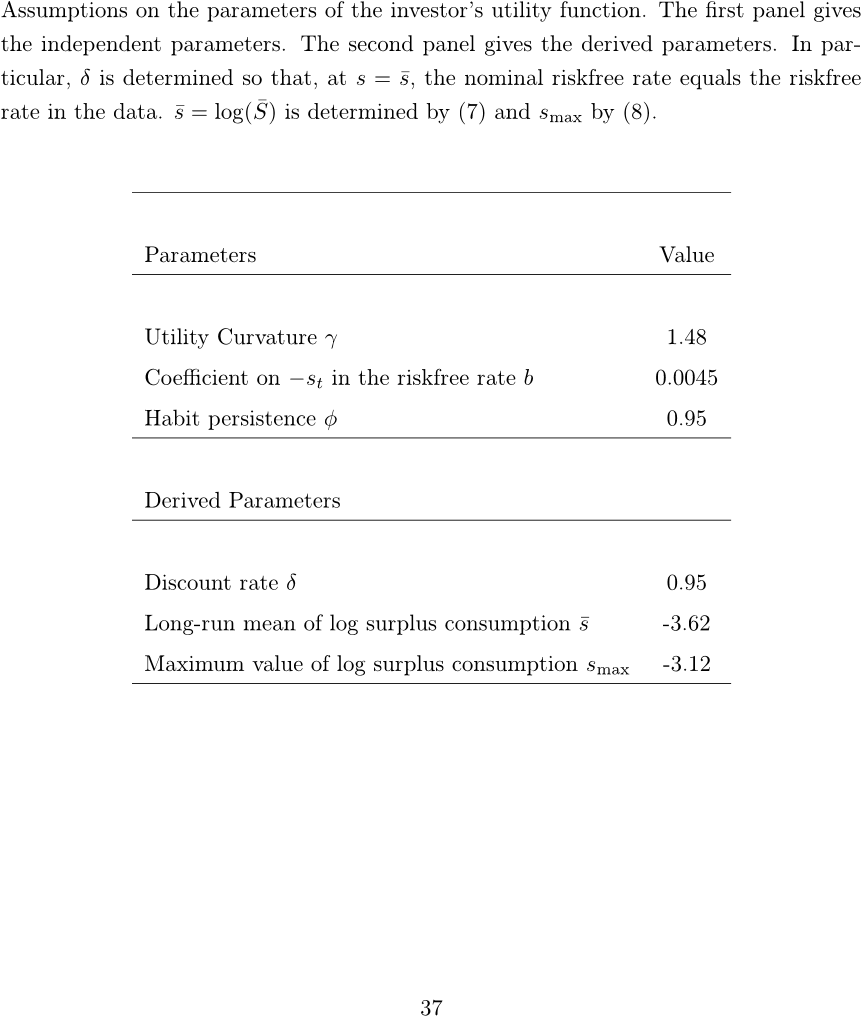
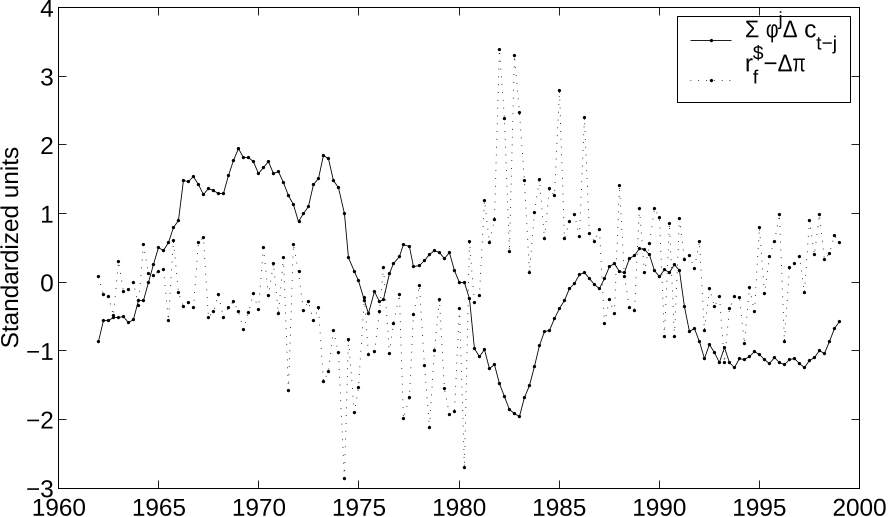

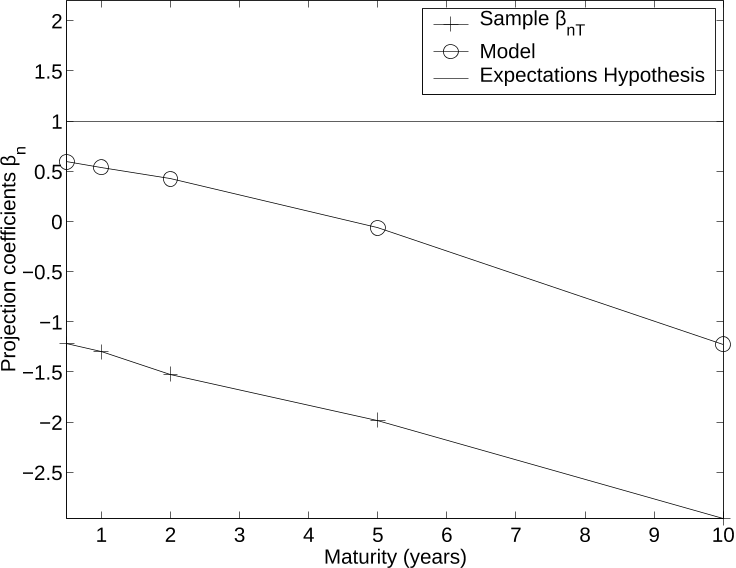
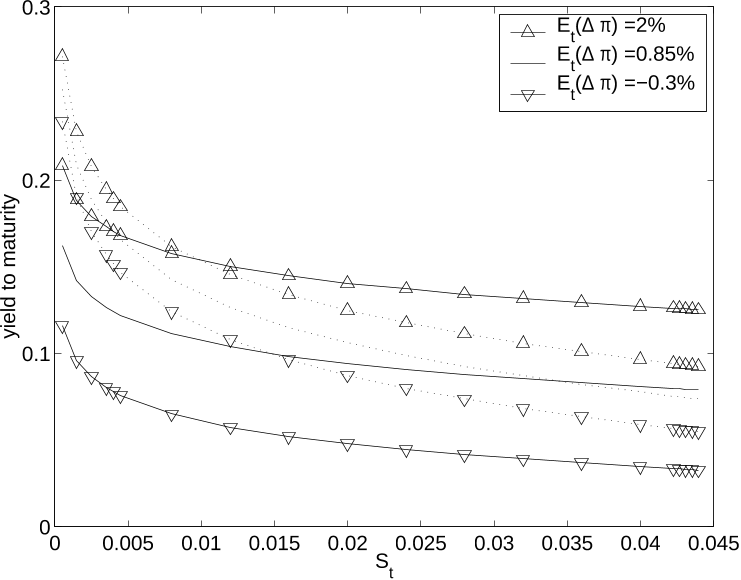

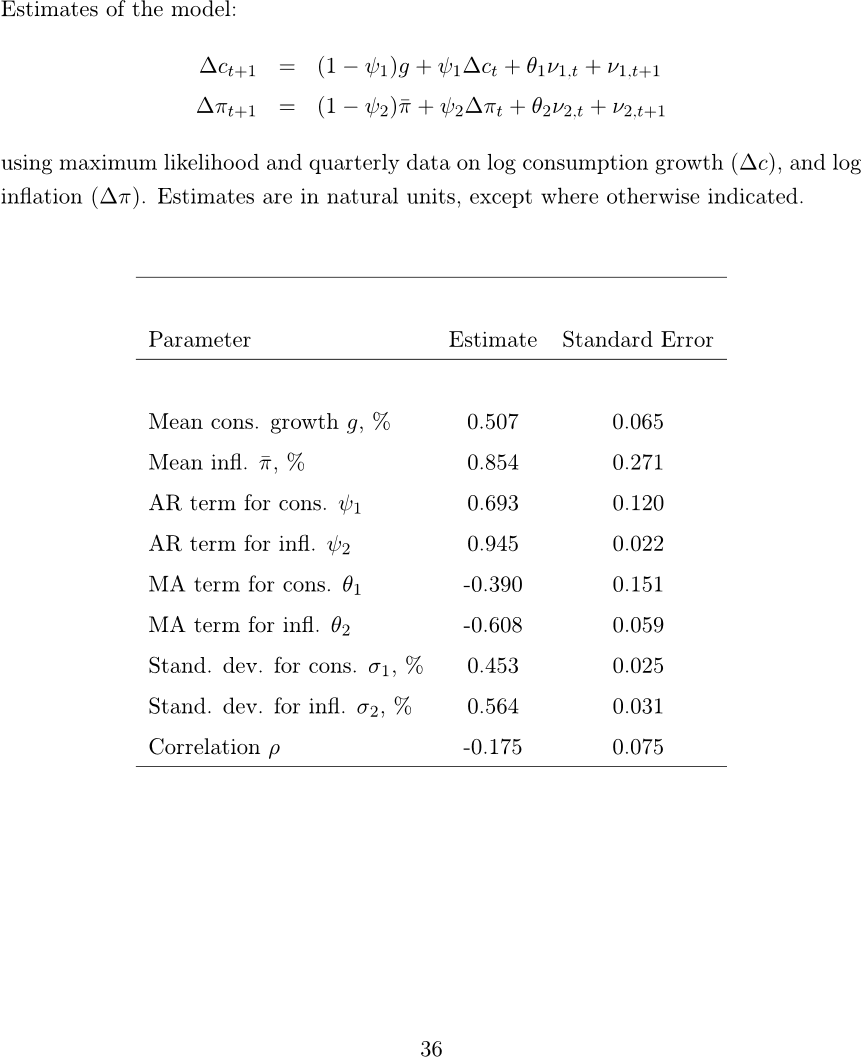
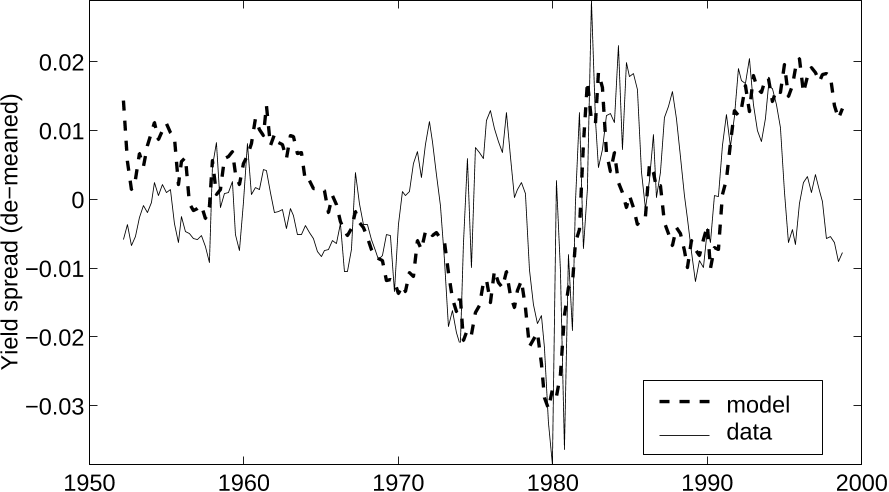
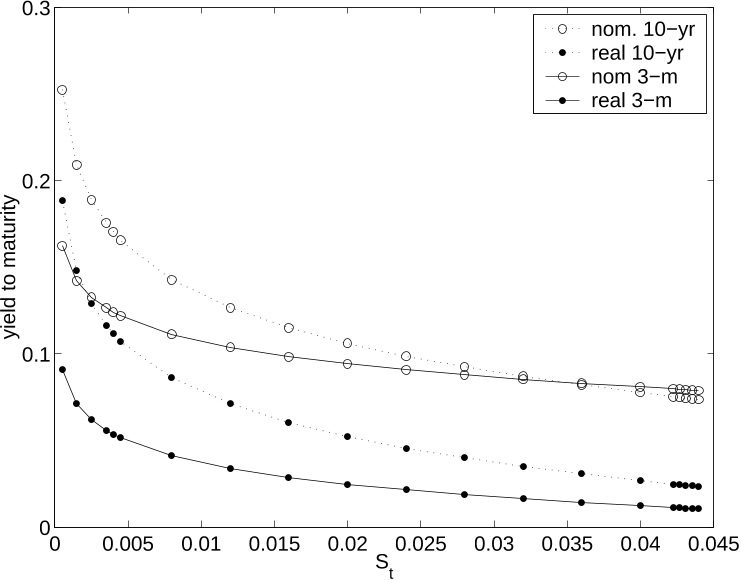





10 citations
9 citations
9 citations
9 citations
...This finding is consistent with the results in Brandt and Wang (2003), Piazzesi and Schneider (2006) and Wachter (2004, 2006)....
[...]
...…e.g. 2¼ 3, not only the representative agent becomes 10 The reason why we do not use the results in Wachter (2006), the final publication of Wachter (2004), is that the longest maturity of the risk-less interest rates in Wachter (2006) is only 5 years, that is too short for us to compare…...
[...]
...Wachter (2004, 2006) extends the framework of the consumption-based asset pricing model with habit formation in Campbell and Cochrane (1999) to study the spectrum of the term structure....
[...]
...10 The reason why we do not use the results in Wachter (2006), the final publication of Wachter (2004), is that the longest maturity of the risk-less interest rates in Wachter (2006) is only 5 years, that is too short for us to compare the whole spectrum of the term structure....
[...]
...In addition, the comparisons between the generated yield curves of our model and those of the consumption-based asset pricing model in Wachter (2004, 2006) are presented....
[...]
9 citations
...Indeed, economic theories (e.g., Buraschi and Jiltsov, 2007; Wachter, 2006) generally suggest that the yield curve should vary with macroeconomic fundamentals....
[...]
10,019 citations
...In addition, results available from the author show that price–dividend ratios have the ability to predict excess returns on equities, just as in the data (Campbell and Shiller, 1988; Fama and French, 1989), and that declines in the price–dividend ratio predict higher volatility (Black, 1976; Schwert, 1989; Nelson, 1991)....
[...]
...…from the author show that price–dividend ratios have the ability to predict excess returns on equities, just as in the data (Campbell and Shiller, 1988; Fama and French, 1989), and that declines in the price–dividend ratio predict higher volatility (Black, 1976; Schwert, 1989; Nelson, 1991)....
[...]
7,014 citations
6,141 citations
...Thus, the model can fit the equity premium puzzle of Mehra and Prescott (1985)....
[...]
4,110 citations
...In addition, results available from the author show that price–dividend ratios have the ability to predict excess returns on equities, just as in the data (Campbell and Shiller, 1988; Fama and French, 1989), and that declines in the price–dividend ratio predict higher volatility (Black, 1976; Schwert, 1989; Nelson, 1991)....
[...]
...…from the author show that price–dividend ratios have the ability to predict excess returns on equities, just as in the data (Campbell and Shiller, 1988; Fama and French, 1989), and that declines in the price–dividend ratio predict higher volatility (Black, 1976; Schwert, 1989; Nelson, 1991)....
[...]
3,886 citations